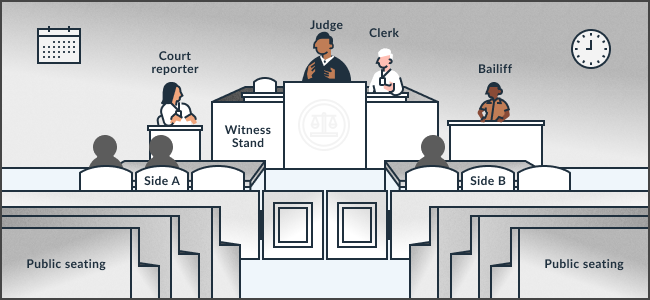Prepare for your debt trial
If you're defending yourself in a debt case, you can prepare for your trial by:
- Watching a debt trial at your court, if possible
- Gathering evidence and responding to requests from the other side (discovery)
- Going to your case management conferences to work out any procedural issues with the judge
- Reviewing the Plaintiff's Declaration in Lieu of Live Testimony if they send one to you
- Preparing what you plan to say and ask at trial


